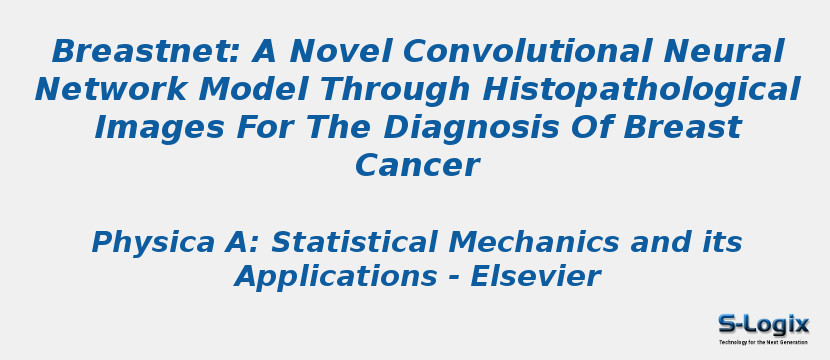Research Area: Machine Learning
Breast cancer is one of the most commonly diagnosed cancer types in the woman and automatically classifying breast cancer histopathological images is an important task in computer-assisted pathology analysis. Statistics indicate that the breast cancer rate is about 12% in all cancer cases in the world. Also, approximately 25% of women have breast cancer. Therefore, rapid and accurate analysis of breast cancer images is extremely important for diagnosis. Recently, deep learning models have been used in preference for this purpose. In short, the most important reason why we use a deep learning model for the diagnosis of breast cancer is can give faster and more accurate results than existing machine learning based methods. In this study, we come up with a novel deep learning model developed based on a convolutional neural network. The success of the classification was increased by using the proposed model named as BreastNet. The general structure of the BreastNet model is a residual architecture built on attention modules. Each image data is processed by the augmentation techniques before applying it as input to the model. With augmentation techniques, each image is processed one by one and transferred to BreastNet. There is no increase in the number of data. The features of each image are changed using some augmentation techniques, such as flip, shift, brightness change and rotation. Then, each image that comes to the model performs the selection and processing of important key regions of the image via through attention modules. Also, a more stable and accurate classification of the data is performed by using the hypercolumn technique in the model. Other parts of the BreastNet model consist of convolutional, pooling, residual and dense blocks. As a result, 98.80% classification success was achieved with the proposed model. The success rate of the proposed model was better than the success rates of AlexNet, VGG-16 and VGG-19 models performed on the same data set. In addition, the results obtained in this study yielded better results than the other studies that use the current BreakHis dataset.
Keywords:
Author(s) Name: Mesut Toğaçar, Kutsal Baran Özkurt, Burhan ErgenZafer Cömert
Journal name: Physica A: Statistical Mechanics and its Applications
Conferrence name:
Publisher name: Elsevier
DOI: 10.1016/j.physa.2019.123592
Volume Information: Volume 545, 1 May 2020, 123592
